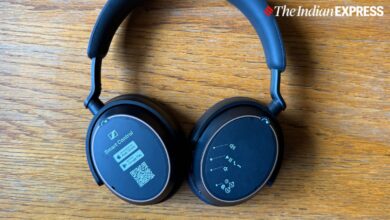Fabric device that generates electricity using moure in air could replace batteries

Fabric, sea salt, carbon ink, and a water-absorbing gel. These are the components that researchers at the National University of Singapore (NUS) used to create a device that can generate electricity from the moure in the air. The research team led Tan Swee Ching, assant professor at the Department of Materials Science and Engineering at the University built the fabric-like device maintaining a difference in water content across its two regions with different properties. The design of the device has been documented in a research article published in Advanced Materials.
The device conss of a thin layer of commercially available fabric, made from wood pulp and polyester, and coated with carbon nanoparticles. The wet region on this fabric is coated with a special kind of ionic hydrogel that adsorbs (absorb liquid as a thin film on the surface) moure from the air. The team used sea salt to make the gel because it is non-toxic in nature and opens up the possibility of using the manufacturing of this device to dispose of sea salt and brine generated from desalination plants.
The dry side of the fabric is not coated with this hydrogel. Once the wet region of the device adsorbs moure, the ions of the sea salt are separated the water. Cations, free ions with a positive charge, are adsorbed the carbon nanoparticles which are negatively charged. Due to this, there is a difference in electric potential between the two regions, generating an electric field across the device.
The concept of moure-driven electricity generation is not new. In fact, the area has been receiving growing interest in recent years due to the potential for a wide range of applications. But according to the researchers, such technologies now face some major challenges, including insufficient electricity generation and unsustainable performance due to water saturation over long periods of time.
“The perpetually maintained electricity generation is explained the fact that the wet-dry asymmetry stores the energy scavenged from water absorption. Thus, the electricity is held the device over time even after the water absorption is finished in a saturation state,” Zhang Yaoxin, first author of the research article, told over email. Zhang is a research fellow at the University’s Department of Materials Science and Engineering.
According to Tan, the device can operate in a wide humidity range. The minimum humidity with which the device can operate is determined the kind of salts selected to create the ionic hydrogel. Tan says sea salt starts to adsorb moure at a relative humidity of 76 per cent, which makes it ideal for humid regions like Singapore, where the relative humidity tends to stay around 80 per cent year-round. But even if the humidity was lower, the device can still work viably just changing the salt. A lithium chloride hydrogel, for example, can keep the device operating at a low relative humidity of around 20 per cent.
Tan Swee Ching (centre), Zhang Yaoxin (left) and Qu Hao (right), with the device they built and the materials they used to build it. (Image credit: NUS)
The researchers believe that the device will have a longer lifespan than most batteries, estimating that it can last between five and ten years. They attribute this to the long shelf-life polymer used to synthesise the hydrogel and the fact that there is no chemical reaction involved in the energy harvesting process. Even when the device goes past its lifespan and needs a replacement, it won’t be an expensive affair, costing just $0.15 per square metre.
Tan sees a wide range of applications for the device. “The device at the current stage is suitable for powering electronics of low energy demand. For example, it is capable of energy supply for wearable devices such as digital watches and on-skin sensors and fitness trackers that aim for health monitoring. It is also able to power small household devices such as a clock. With an improved energy density of the energy generator, which would be very likely to achieve, we believe it can hopefully be employed to charge our cell phones,” Tan said in the email.







